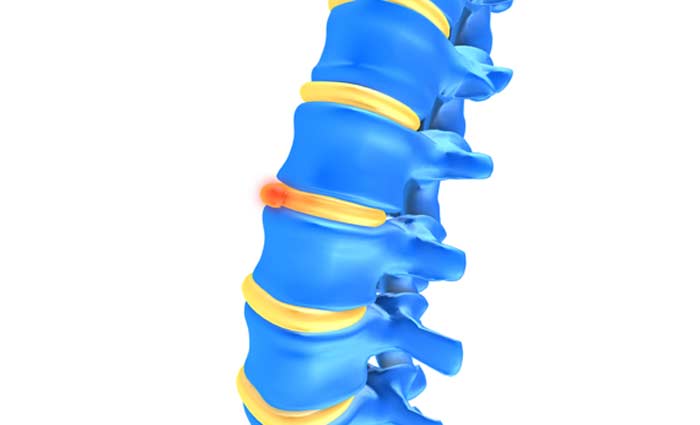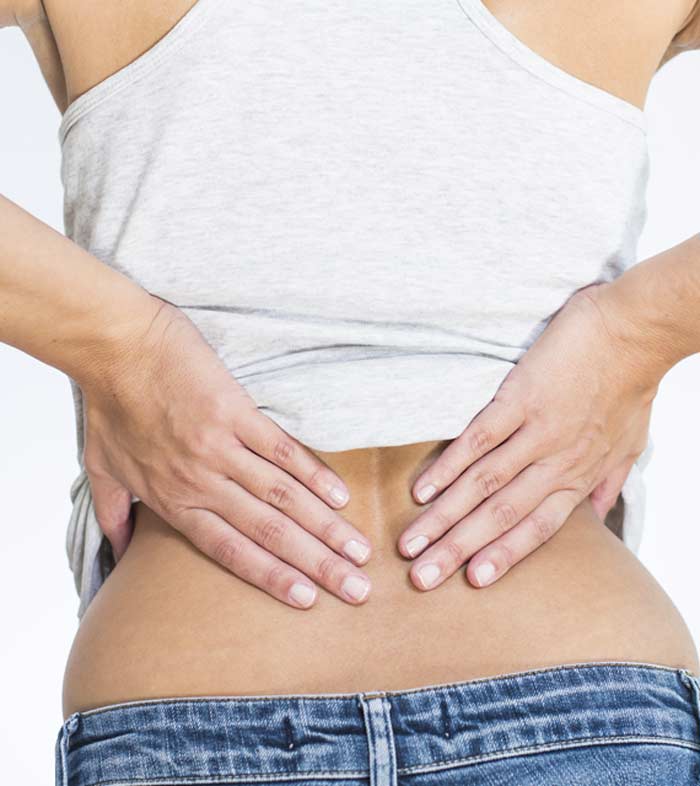
A common source of back, neck, or radiating nerve pain is what’s termed a herniated disc.
Sometimes referred to as a “slipped” or “ruptured” disc, a herniated disc develops when softer inner disc material pushes through the tougher exterior shell.
Some people have herniated discs that cause little or no discomfort, while other individuals suffer from chronic, recurring, or debilitating pain that occurs when nearby nerve roots are irritated by protruding disc material.
What Causes a Disc to Become Herniated?
Discs of the spine often become herniated because of the natural aging process, which is referred to as degenerative disc disease (DDD). Spinal discs also lose some of their water content over time. This makes discs less “spongy” or flexible, sometimes to the point where it’s easier to injure discs with excessive twisting, bending, or extending. Contributing factors may also include improper lifting techniques, repetitious movements within the lower back or neck areas, excess body weight, and poor diet and exercise habits.


What Are Symptoms to Look Out For?
Any of the spine’s 23 discs can become herniated, but it’s often the five ones in the lower back and the six located in the neck that are affected. Some people have herniated discs without even knowing it. Other times, symptoms will progressively become worse as a damaged disc shifts enough to irritate adjacent nerves. Herniated discs sometimes contribute to other conditions, such as sciatica. It’s also possible to have symptoms suggesting a damaged disc that are really caused bone spurs (osteophytes)) or nerve compression from another source. Symptoms commonly associated with herniated discs include:
- Pain within the affected area of the spine
- Pain, numbness, tingling, or a loss of sensation that extends to nearby extremities (e.g., legs, thighs, buttocks, arms, or shoulders)
- Related muscle weakness that may affect stability and gait
- Symptoms that become worse when certain movements are made
How Are Herniated Discs Diagnosed and Treated?
Diagnosis typically begins with a thorough physical examination and a discussion of symptoms experienced. If assessments of muscle strength, walking ability, and reflexes also suggest disc herniation, image tests are usually performed to make a positive diagnosis.
A specialized test called a myelogram that involves taking an X-ray following the injection of a dye into spinal fluid may be done to identify places where there’s excessive pressure on nerves or the spinal cord. Electrical impulses of nerves are sometimes measured with nerve conduction studies.
Treatment often begins with conservative (non-surgical) efforts, such as the use of over-the-counter or prescription pain and anti-inflammatory medications. Some patients also experience relief with muscle relaxants or cortisone injections placed directly into the affected area. Additional treatment options may include:
- Non-surgical decompression therapy
- Patient-specific exercises and stretches
- Chiropractic adjustments
- Massage therapy, hot and cold therapy, and other therapeutic techniques
- Water therapy, yoga, and similar gentle forms of exercise
- Surgery if conservative treatments aren’t effective or symptoms are life-threatening or severe
Factors such as the location of the damaged disc, how much disc material is protruding, and the extent of nerve irritation will determine what treatments are recommended. If partial or complete spinal disc removal become necessary, there are many options available, including techniques that are less invasive. There’s no way to avoid the natural disc wear and tear that happens with age, although being proactive about diet, exercise, posture, and sleep habits may reduce your risk of experiencing distracting discomfort.
